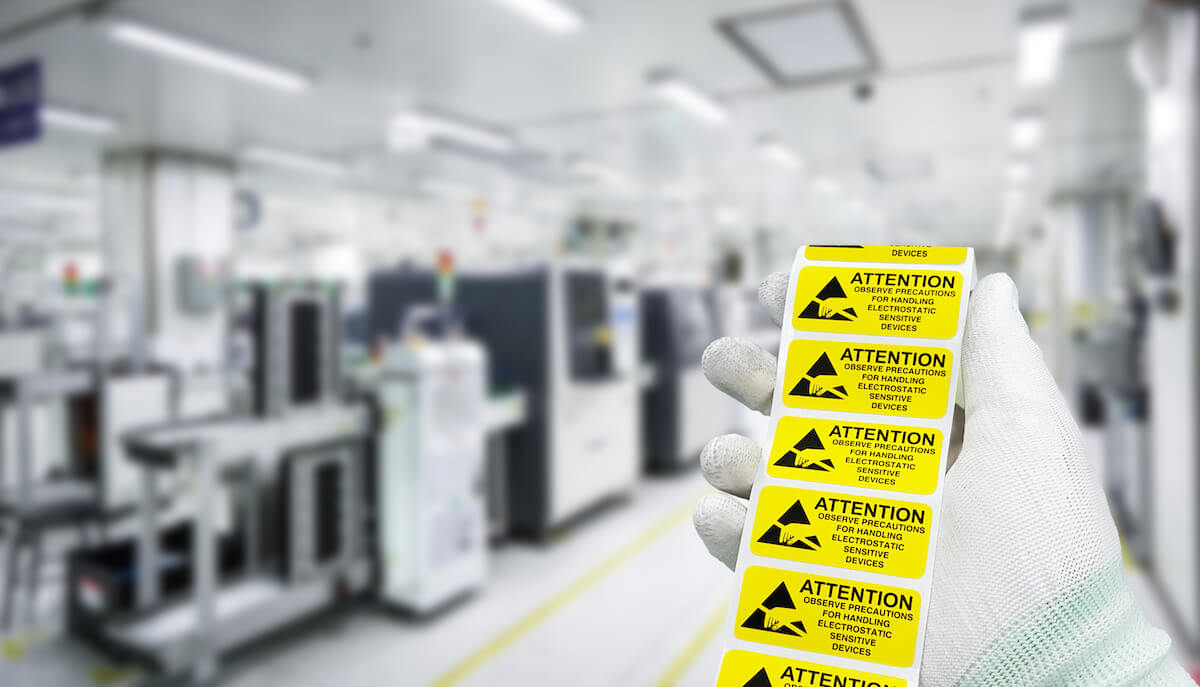When I worked for Advanced Packaging magazine in the early 2000s, we sometimes got pitches from companies that made cardboard boxes or foam cushioning materials. Their spokespeople obviously had not read the magazine or looked beyond the word “packaging” in the title. We ignored those pitches.
However, many levels of packaging are relevant to our industry, from the methods used to assemble chips onto a board and protect them from moisture and vibration to the containers needed to protect the boards during handling and shipping.
Consider, for example, the antistatic or static shielding bags (ESD bags) that protect against damage from electrostatic discharge (ESD). The translucent pink bags made from polyethylene do not fully protect against ESD. More robust static shielding bags for ESD-sensitive boards are multi-layer, with up to five layers of metal and plastic films.
You may wonder what ESD bags have to do with sustainability. They are a minor aspect of circuit board manufacturers’ and assembly houses’ footprints, so they aren’t the first thing to tackle. I expect you will put more effort into; things like changing how you power your facilities or redesigning your equipment to consume less energy. Whether or not discarded bags are part of your waste stream, I suggest that you keep reading.
Redesigning ESD bags
Part of managing waste streams is reducing the amount of waste that enters them, which can mean finding ways to reuse components and materials as many times as possible. Static shielding bags are not generally reusable due to reliability concerns. Manufacturers don’t want to risk defective bags causing ESD damage to boards. The bags are not recyclable since they are made from diverse materials that are bonded together.
Another aspect of waste stream management is increasing recycling rates. Pink bags might technically be recyclable because they are made from a single polymer, but there’s no infrastructure for an efficient recycling process. Polyethylene recycling is notoriously problematic. The material isn’t compatible with the automated equipment in municipal recycling centers. However, there is an alternative on the horizon.
I spoke with Ying Liu, CEO of Blue Lake Packaging, about biodegradable bags for ESD protection. Her company makes packaging from cellulose, a natural fiber from wood pulp and agricultural waste. Applications include transparent protective films, molded fiber for product cushioning, smart labels, and ESD protective packaging. According to Liu, wood pulp is an excellent material for preventing static shock. Her company’s bags can replace pink bags in some applications where particle control is not especially stringent. Liu and her colleagues are working on improving the process to meet more demanding requirements.
Liu and I discussed something I have often written about—the difficulty of finding alternative materials. The ideal materials meet all the technical requirements, are recyclable and compostable, are cost-equivalent to whatever they are replacing, and are available in large quantities. Those ideal materials do not exist and might not be possible. There will probably always be tradeoffs. The more environmentally friendly option may cost more (though not necessarily). It might not be quite as strong or chemically resistant, but depending on the application, that might not matter. When a material is new, high-volume production will not yet be in place.
Engineers tend to overdesign products so that they can survive the most extreme or unlikely scenarios. I understand that approach to risk mitigation, but it can create products that use more material than necessary. A thorough analysis might show that scaling back the requirements a bit is acceptable. How much puncture strength a bag needs depends on what it is transporting. A biobased material might be suitable for 90 percent of the use cases.
Is Reuse Possible?
Regarding reuse, I consider what I do when customers buy signed paperback books from my website. I save envelopes from shipments I receive and use them to pack up the books. I encourage my customers to keep the cycle going in two ways: share the book with someone else who would want to read it and reuse the packaging to ship a book or other item.
Semiconductor companies could use bags more than once or resell used ESD bags to customers in different industries. A nearby factory that makes products that are not at risk for ESD damage might be happy to buy the bags at a lower cost than new bags. Used bags can still protect products from scratches during transport.
I realize that there are logistical challenges. The seller would need a process to collect used bags, inspect them, and distribute them. The buyer would want to be assured of a consistent supply of enough bags of the right size and quality. Still, such cross-industry collaboration can be a great way to increase reuse and reduce waste.
I urge you to rethink all the materials that go into your products and those needed to transport them. You might find a new supplier that can help you improve your environmental impact.
The fact that a company is developing ESD bags made from natural fibers is encouraging. This is one example of how redesigning products with environmental considerations in mind can lead to creative solutions. There are many others, some of which fall within the umbrella of the now defunct Advanced Packaging. Do you know of a relevant example? Share it with me and you might see it appear in this column.




















